
The President’s Daily Brief (coolly called the PDB) is a top-secret document produced and given each morning at 7:45 a.m. to the President of the United States. It provides the prez with the juiciest international intelligence warranting attention and analysis. We feel our Monday Beer Brief is not unlike the PDB. Some minor differences: ours is once a week; comes at 10:30 a.m.; is very public; deals mostly with beer; and will occasionally rely on Dune and Voltron jokes to make it readable. These are small discrepancies. Both briefs have their merits, but if you’re a brewing pro or beer super enthusiast, this is the intel you need for your Monday morning.
Japan’s Asahi continues buying spree, purchases Anheuser-Busch brands in Europe
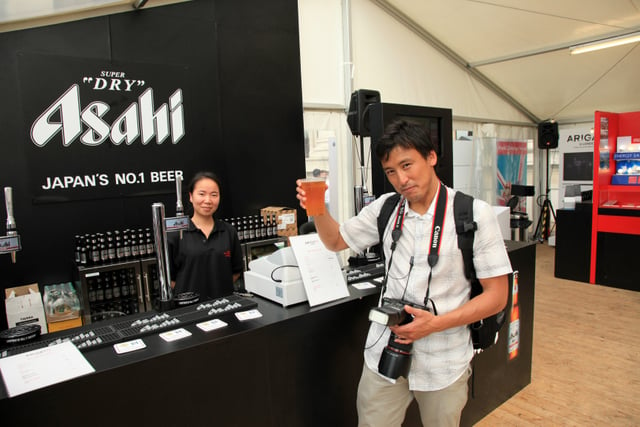
Top priority: There are aggressive movements in Europe, and once again they involve Belgian-based small business slayer Anheuser-Busch InBev (known to us endearingly as Beer Voltron). According to news reports, Beer Voltron has agreed to sell five Euro brands to a similarly global-domination-minded Japanese company — Asahi Group Holdings — a leading brewery and soft drink rollup based in Tokyo. Don’t get confused: Beer Voltron does not want to sell these. It’s being forced to. From this Reuters article:
AB InBev agreed to sell brands including Pilsner Urquell from the Czech Republic, Poland’s Tyskie and Lech, Hungary’s Dreher and Romania’s Ursus to ease clearance from competition regulators for its $100 billion takeover of SABMiller, finalised [sic] in October.
The acquisition, seen closing in the first half of next year, would be Asahi’s biggest deal, building on its 2.55 billion euro purchase of SABMiller’s western European brands Peroni and Grolsch.
As we’ve discussed before, both Japan and China have seen beer sales sliding and saturating and are gravitating toward new markets and premium products to grow. As of January 2014 (the latest numbers we could find), Asahi held a 35 percent market share in the Japanese beer market and about a 1.2 percent market share worldwide.
Apparently, this deal is the second-largest on record in the food-and-beverage industry by a Japanese company after Suntory Holdings Ltd. spent $16 billion for Beam Inc. in 2014. According to the article:
Based on that figure, [Ashai’s] bid represents a multiple of 14.8 times, which is higher than the 12 to 14 times brewing assets in mature markets often fetch.
It paid about 15 times EBITDA for Peroni and Grolsch, its first foray into Europe, fueled in part by synergies with its existing business in Australia.
It’s nice to see the global beverage conglomerates playing so politely. It’s almost like they’re working together, right?
Massachusetts town considers a monastery that is also a brewery
Benedict of Nursia is one of our favorite saints — right up there with Arnold of Soissons and St. Vincent. Benedict founded rural monk communities in 6th century Italy. His most influential philosophy was the “Rule of Saint Benedict,” which contained precepts (instructions) for his monks. He actually wrote an entire book of these religious rules. Fab read.
As more and more of these Benedictine monasteries began appearing in Europe, they became way stations for weary travelers, as the congregations were ordered to a) live a life that was self-sustained and b) provide for passing visitors and pilgrims, which often included food and drink (though not necessarily for free). Back in those days, drinking water was always a risky proposition (sanitation being an obvious struggle), so folks drank beer (a lower alcohol version) in replacement of water (while wine was a gentle folks’ booze).
Eventually, these Benedictine monasteries became famous breweries. Why? Because their beer was better. Because they studied the science, experimented with ingredients and brought the patience, sanitation and worship that only a monk can bestow. Thus, god was happy.
Those traditions still live on today in Europe — and even in America. While many consider Massachusetts to be a godless, forsaken land (check these Boston pay-to-play practices), the beer/monk combo is actually a thing there (check out Spencer Brewery in Spencer, Mass). Now, an upscale neighborhood in Swampscott, Mass., is also looking to open a brewing monastery. According to this article on New England Cable News:
The monastery would be at the old Marian Court College on Littles Point Road and would house up to 18 monks brewing beer to fund the projects. Millions are expected in repairs to the buildings.
…
“The only way to support the property and restore it and to be a good neighbor would be to have the level of economic activity a brewery would provide,” said Fr. Andrew Bushell, an orthodox monk.
Like always, some folks are against it, but hey, that just means more spiritual salvation (read: god beer) for you and I.
Brewers Association announces top 10 hops in survey
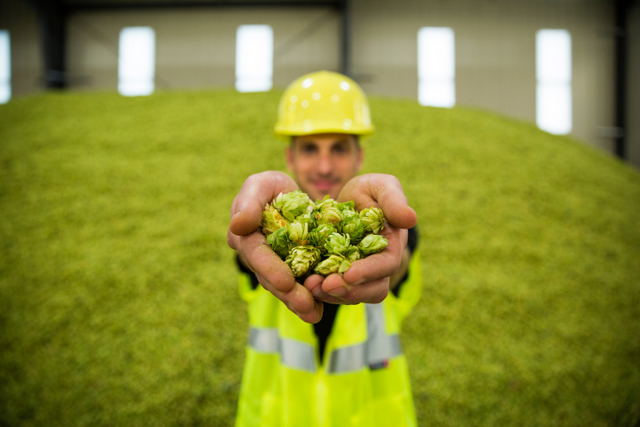
The Hop Growers of America reported that after a 15.4 percent increase in acres harvested in the United States in 2015, a 10.2 percent increase in 2014, a 10.3 percent increase in 2013 and a 7.2 percent increase in 2012, acreage has jumped up once again in 2016. For the second year in a row, U.S. hop acreage surpassed previous records to reach all-time highs. Wow, right?
With 53,213 total acres strung for harvest in the United States this year, it’s a whopping 8,303 new acres from 2015 — an 18.5 percent increase.
But what hops exactly are being planted? And how much of each breed is being produced? The Brewers Association just announced those stats in its annual Hop Survey. Along with a wealth of other data, the annual survey includes a year-over-year Top 10 Hop Production Ranking. This is the 2016 survey, but the numbers correlate to hop production from 2015.
From craftbeer.com (drum roll please):
- Cascade
- Centennial
- Chinook
- Simcoe
- Citra
- Amarillo
- Mosaic
- Crystal
- Hall Mitt
- CTZ
Look how that compares to 2007’s production ranking.
- Cascade
- Centennial
- Wilamette
- Chinook
- Amarillo
- EKG (UK)
- SAAZ (CZ)
- CTZ
- Golding (US)
- Styrian Golding (SL)
Congress pushes for more hop research, new full time scientist
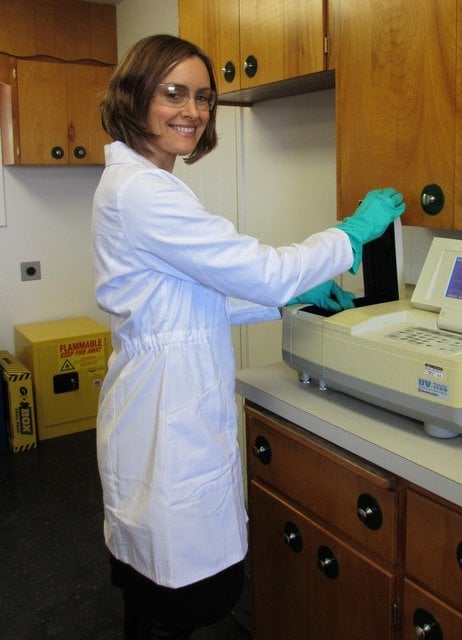
Craft beer has challenged hop growers. New varieties. Enormous demand. Huge acreage. Varied products: whole cone, pellets, CO2 extract, hop hash and beyond. The indie beer industry has forced the hop industry to quickly and dramatically evolve over the last decade, and there have been challenges, failures and successes. The point is that while acreage is up (see above), the science behind hop farming still needs to improve. That’s what some folks in Congress think, at least.
Apparently, more than 100 members of Congress are asking the USDA to increase hop-related research by adding a second full-time research position so that “new pest-resistant and climate tolerant hop varieties may be developed faster.” According to the Capital Press (“The West’s Ag Website”):
Reps. Dan Newhouse, R-Wash.; Peter DeFazio, D-Ore.; Erik Paulsen, R-Minn.; and Chellie Pingree, D-Maine, led 100 other members in a Dec. 1 letter to USDA Secretary Tom Vilsack and Under Secretary Cathie Woteki asking for the change.
It would be a reallocation of $200,000 to $300,000 in research funding and could be done administratively, Newhouse’s office said.
The Agricultural Research Service within USDA currently has one research scientist for hops pathology in Corvallis, Ore., and .7 of a position for genetic research on hops in the Lower Yakima Valley. The request is to make it a full-time position.
Fun sidebar: While several private hop breeding programs exist, the two largest-volume hop varieties, Cascade and Centennial, were developed in public programs — or so says the article.
SanTan Brewing set to release monstrous 24-ounce cans
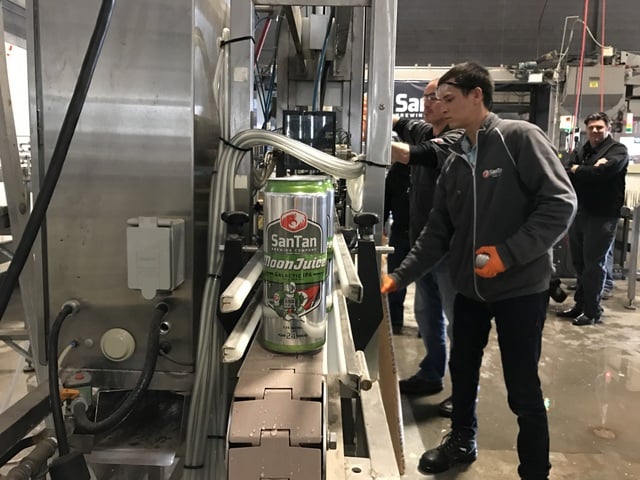
There’s something powerful about holding a 24-ounce can of beer. It says, let’s blow this buzz up a notch. I enjoy them when going to an entertainment venue that has obnoxious lines. Suddenly, I have two beers in my hand! They’re also good for sharing (if you allow that sort of thing), which works with a beer that multiple folks would like to taste, and they travel well. Now, I only need one or two brewskis for my ascension up Everest.
Houston’s SanTan Brewing Co. recently announced it will be offering 24-ounce cans of its popular MoonJuice Galactic IPA and MoonJuice Galactic Grapefruit IPA in year round, wide release format. In order to accommodate larger cans, SanTan Founder Anthony Canecchia and plant engineer Fred Marshall had to re-engineer their original Cask canning line, including machining new parts and reprogramming the operating system. From the press release:
“Tinkering with machines is something we love to do at SanTan. We are never content with what we are given and are always looking to improve our game. I am extremely proud and excited to be the first Arizona craft brewer to package in a 24-oz can,” said Anthony Canecchia, founder and brewmaster, SanTan Brewing Co.
Expanding its offerings to include the 24 oz can has been a goal at SanTan for years. The larger, single serve package will increase availability of SanTan Brewing craft beer in convenience stores and sports venues. Canecchia selected his two versions of MoonJuice IPA as the first brews to fill the 24-oz cans primarily due to their huge success and growth within the first year of wide spread availability in 12-oz cans. The price point will remain consistent with the current six-pack pricing per volume, coming in around $2.99-$3.99 per can.
Now pass me one of those behemoths. I’m quitting this amazing job for good today.


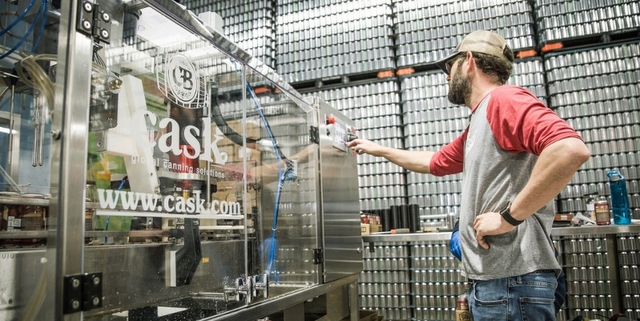
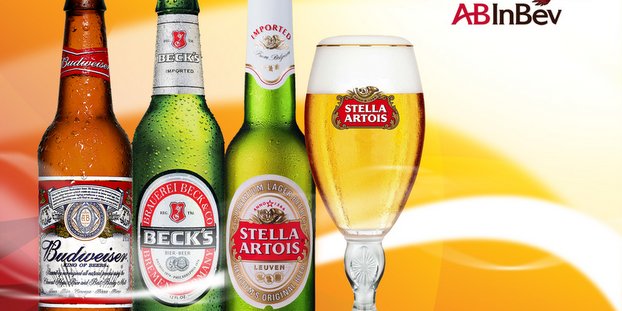

Leave a Reply
You must be logged in to post a comment.